Siem Reap is synonymous with Angkor Wat, but for those willing to venture a little further, a different kind of magic awaits at Phnom Krom. This isn’t just another sunset spot; it’s an experience for the intrepid traveler seeking natural beauty, ancient history, and a touch of raw Cambodian charm. Perched atop a modest hill, Phnom Krom offers breathtaking panoramic views, especially at dusk, making it a truly rewarding excursion.
Getting There
Phnom Krom is situated approximately 12-15 kilometers southwest of Siem Reap city, making it a perfect half-day trip. The journey usually takes about 30-40 minutes by tuk-tuk or scooter, winding through local villages and rice fields. The slightly remote location is part of its allure, offering a glimpse into rural life outside the bustling town center.
History of Prasat Phnom Krom
At the summit of Phnom Krom lies the ancient temple of Prasat Phnom Krom. This brick and sandstone temple was built in the late 9th century, during the reign of King Yasovarman I, who also founded the first city of Angkor (Yasodharapura). It’s one of the three hilltop temples (along with Phnom Bakheng and Phnom Bok) that marked the corners of his capital. Dedicated to Shiva, Vishnu, and Brahma, the temple complex, though in ruins, still exudes a quiet reverence. Exploring its crumbling towers before settling down for the sunset adds a historical depth to your visit, connecting you to centuries of devotion and craftsmanship.
My Experience
My recent visit on October 23, 2025, offered a vivid reminder of Phnom Krom’s unique character. Arriving a little later than planned, around 5:50 PM, I caught the tail end of the spectacular light show. The sky was a canvas of fiery oranges, deep purples, and soft blues, painting the vast landscape below.
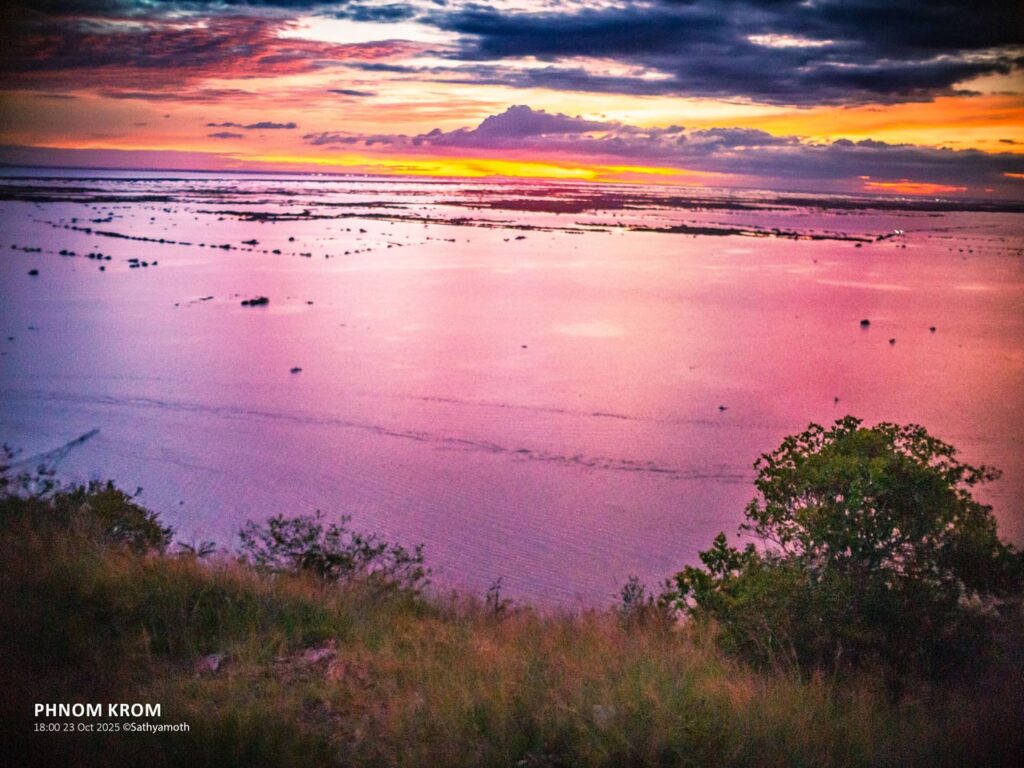
What struck me immediately was the high water level of the Tonle Sap Lake. Even from the elevated vantage point, the expanse of water was evident, shimmering with the reflected twilight. This season, the lake’s abundance truly amplifies the feeling of being at the edge of something immense and wild.
Unlike the more developed Phnom Bakheng, where steps and designated seating areas cater to crowds, Phnom Krom retains a wonderfully natural feel. There aren’t any paved benches or tiered seating here. Instead, you’ll find yourself navigating rocky terrain to find a comfortable spot among the natural rock formations. A word of caution: be careful where you step, and make sure you secure a stable place to sit and enjoy the view.
Essential Gear for Your Phnom Krom Adventure:
Given the rustic nature of the place and the timing of a sunset visit, I highly recommend packing a few essentials:
- Insect Repellent: This is crucial, especially during this season with the high water levels. As dusk settled and the light faded, the mosquitoes came out in force. Apply generously!
- Torch (Flashlight): If you plan to stay until it gets dark (around 6:20 PM or later, as I did), a torch is absolutely non-negotiable. The path down becomes very dark, and navigating the uneven terrain without one would be challenging and unsafe.
- Comfortable Footwear: Forget sandals; sturdy shoes with good grip are essential for climbing the steps to the temple and finding your way around the rocky summit.
- Water/Snacks: There are usually vendors at the base of the hill, but it’s always good to bring your own supplies.
Who is Phnom Krom For?
Phnom Krom is not for everyone. If you’re looking for manicured gardens, easy access, and a perfectly organized tourist experience, Phnom Bakheng might be a better fit. However, if you are an adventure-seeker, someone who appreciates natural, untouched beauty, and an adult person who enjoys a bit of rugged exploration, then Phnom Krom is an absolute must-do.
It’s a place where you can connect with history, witness nature’s grandeur, and truly feel like you’ve discovered a hidden gem away from the usual tourist trail. Just remember to come prepared, respect the natural environment, and soak in every moment of that unforgettable Cambodian sunset.
credible sources (e.g., Wikipedia ).
Next Attractions
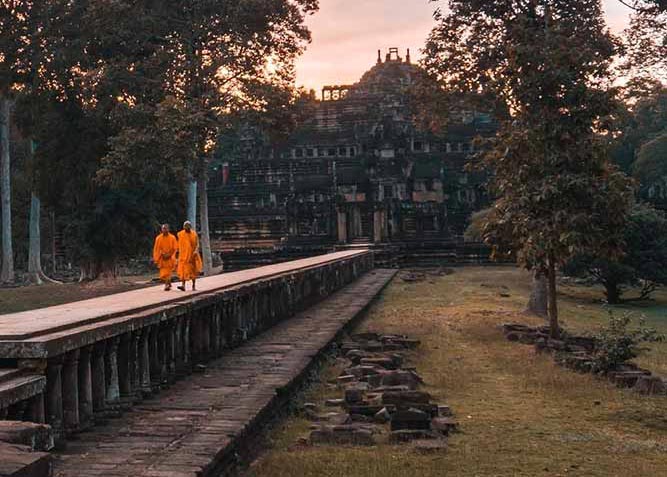
Baphuon Temple
This majestic pyramid represents Mount Meru and is known for its steep staircase, reconstructed sandstone bridge, and the giant reclining Buddha on its west side—an incredible blend of religious transformation from Hinduism to Buddhism.
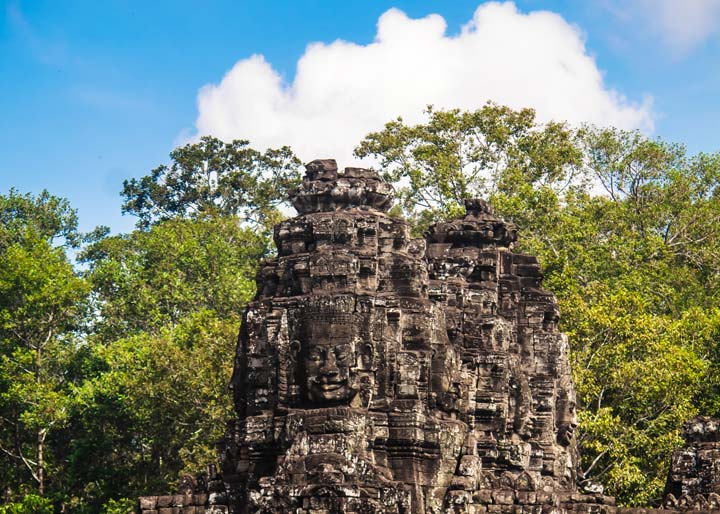
Bayon Temple
Famous for its 216 enigmatic stone faces, this iconic temple symbolizes the all-seeing eyes of Avalokiteshvara. The interplay of light and shadow among its towers creates an unforgettable visual experience.
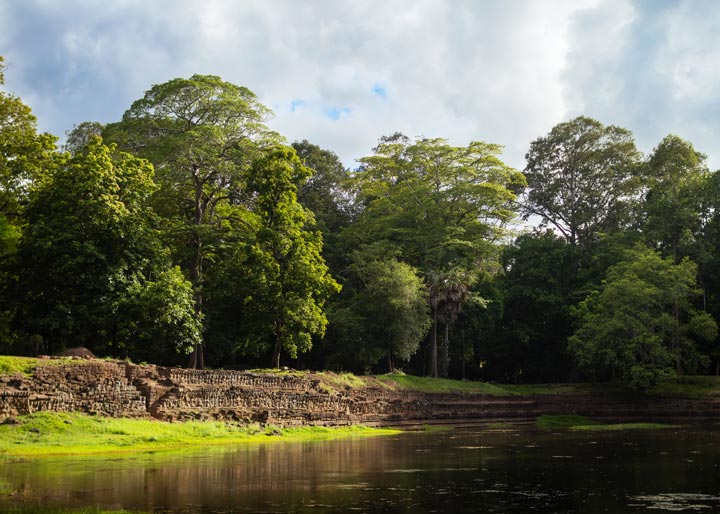
Woman’s Pond
These small ancient ponds add serenity to the forested setting. Though less visited, they were likely used for ritual bathing or royal ceremonies.
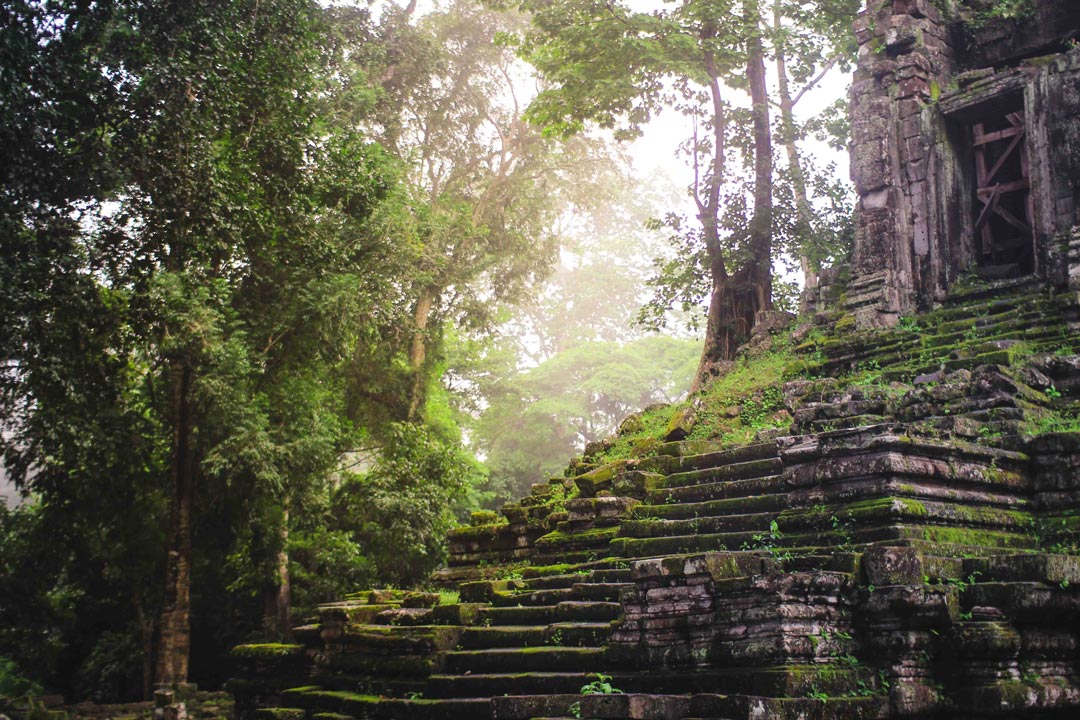
Preah Palilay
Tucked away in a shaded grove, this small temple with its unique chimney-like tower exudes a peaceful charm. Look for its beautiful lintels and the sacred Bodhi tree growing nearby. Read more…
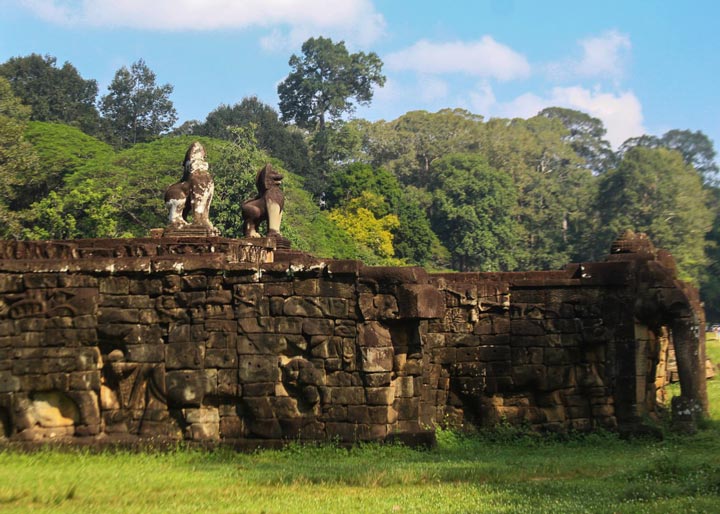
Terrace of the Elephants
Once viewing platforms for royal ceremonies, these terraces boast intricate carvings of elephants, celestial beings, dancers, and mythical guardians, preserving stories of Angkor’s royal legacy in stone.
Photo by Sathya Moth

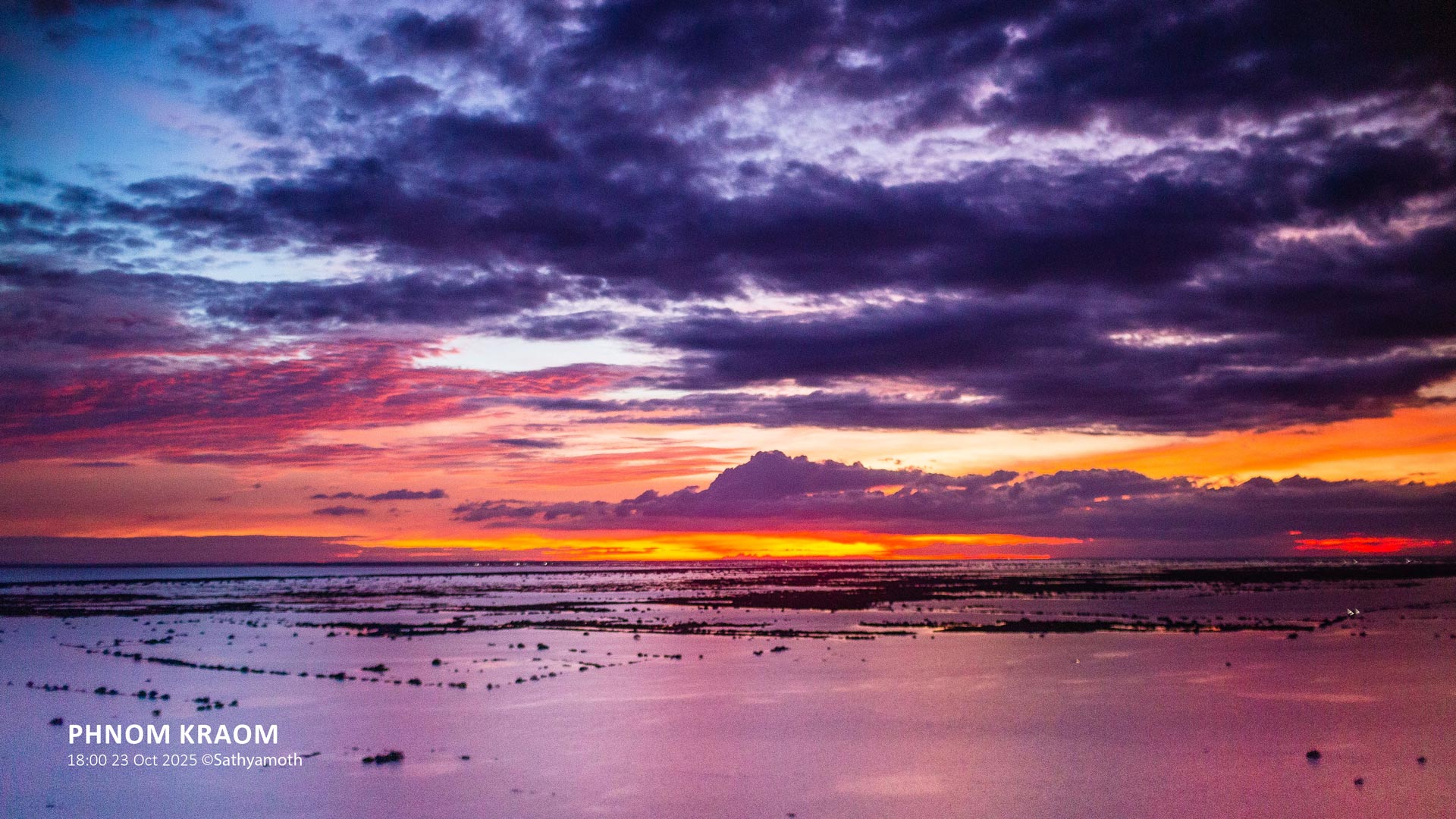
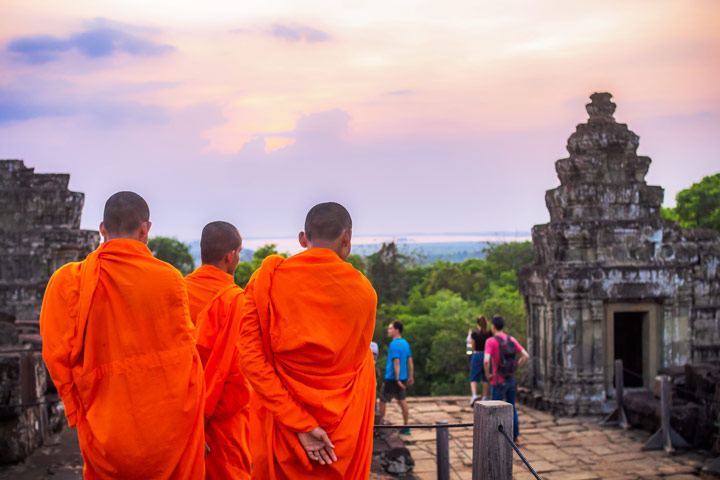
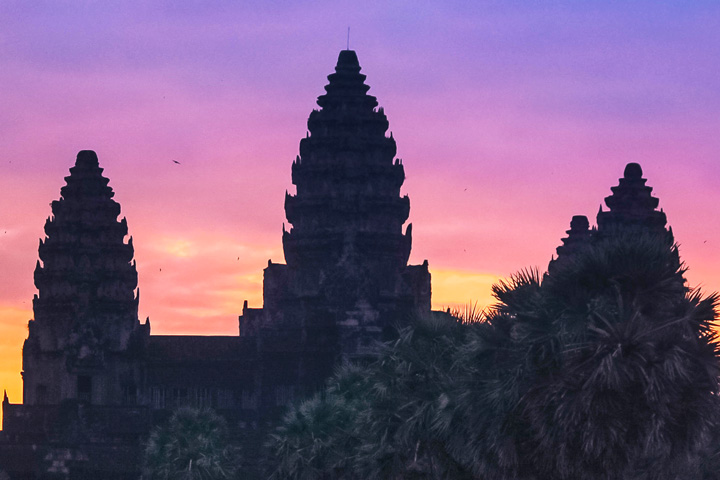
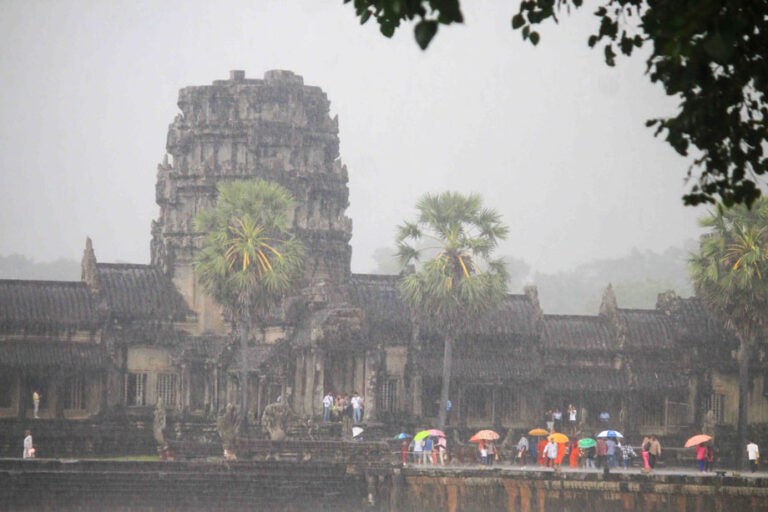
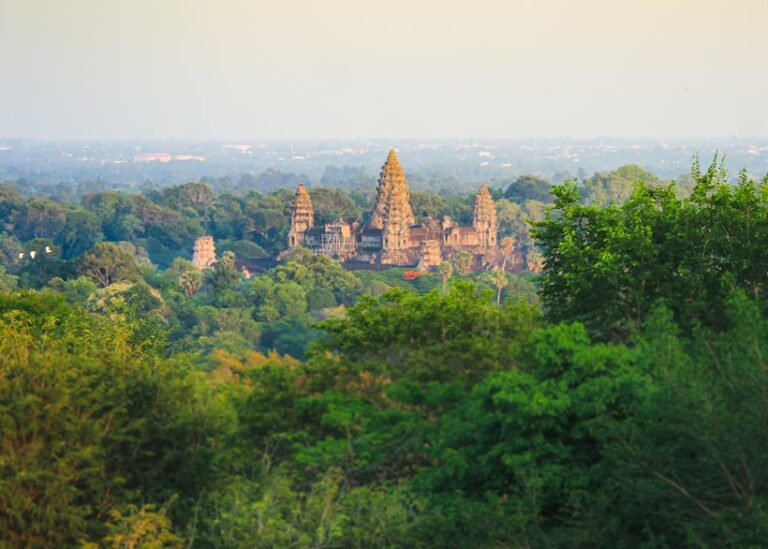
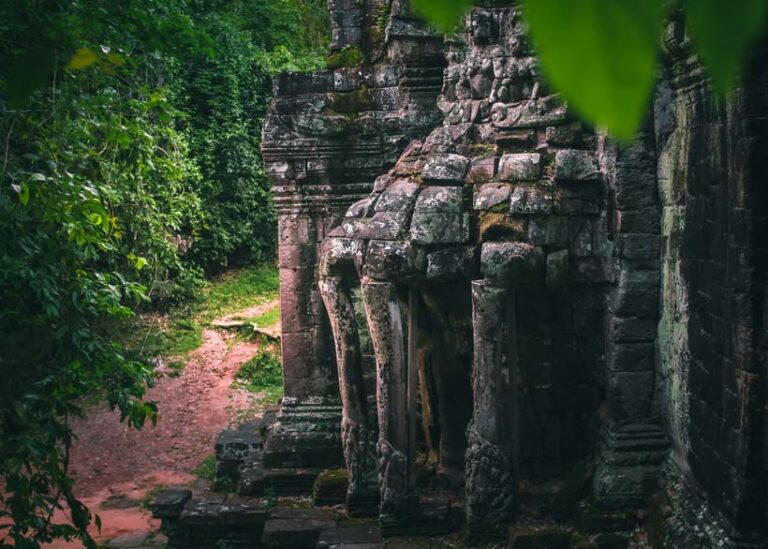
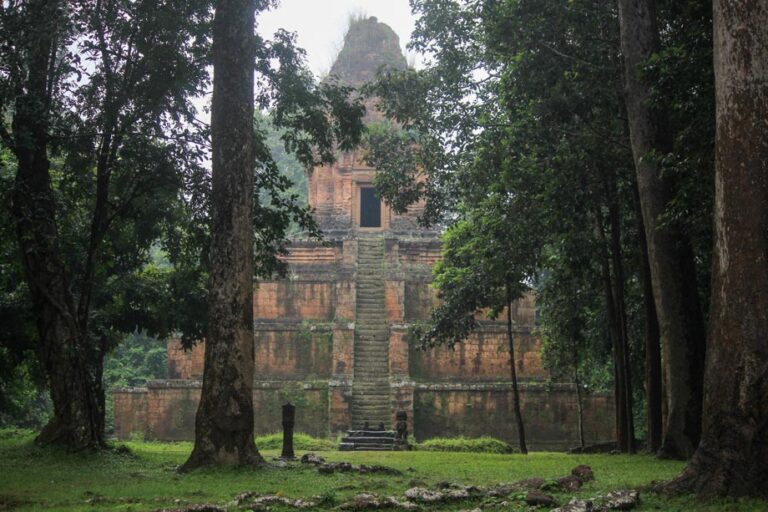
Leave a Reply